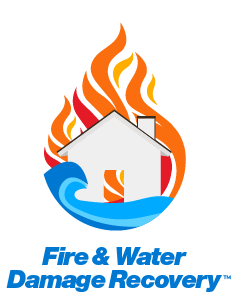Dry Star Restoration Things To Know Before You Get This
Table of ContentsThe Ultimate Guide To Dry Star RestorationThe 6-Minute Rule for Dry Star RestorationAll about Dry Star RestorationThe Ultimate Guide To Dry Star RestorationFacts About Dry Star Restoration Revealed
Within mins, the kitchen area was ablaze, creating extensive damages and requiring months of reconstruction work. Especially in winter season, home heating systems are a common fire danger. Damaged circuitry or placing heaters as well close to flammable materials like curtains can stir up a fire. Constantly maintain heaters far from anything that can burn and evaluate them regularly.
Products like electric motor oil or cleansing liquids can stir up under certain problems. Always shop these products appropriately and far from heat sources. water damage restoration company near me. Stats: According to the National Fire Protection Organization, home chemicals are in charge of a notable portion of home fires annually. By understanding these usual causes, you can take steps to make your home safer.
A Biased View of Dry Star Restoration

Secret concerns consist of: Water Intrusion: Water can permeate into wall surfaces, floorings, and furniture. This can damage the architectural integrity of your home. Form Growth: If water is not dried out swiftly, mold and mildew can begin to expand within 24-48 hours. Mold and mildew can trigger wellness concerns and further damage to your residential property. Architectural Weakening: Water can deteriorate wood frameworks and trigger metal components to rust, making your home hazardous.
Next, we will certainly dive right into the actions included in the fire damage restoration procedure. Fire reconstruction is the procedure of cleansing, repairing, and bring back a home that has actually been damaged by fire.
The Ultimate Guide To Dry Star Restoration
Debris Elimination and Demolition: Damaged products are securely gotten rid of, and any kind of unsafe compounds like asbestos are handled suitably. Fire damage includes several kinds of harm to a residential or commercial property: Physical Damage: This includes charring, smudging, and disintegration of materials straight affected by the fire.
Water Damages: Water used to extinguish the fire can lead to structural weakening and mold and mildew growth otherwise properly handled. Fire remediation professionals utilize specialized strategies and devices to deal with all these sorts of damage, ensuring the residential property is risk-free and comfortable once more. Next off, we will dive right into the steps associated with the fire damage restoration process.
From cutting edge water removal equipment to specialized tools for smoke and residue elimination, we have the resources needed to recover your property to its pre-loss problem. Our hop over to here techniques are created to be complete and effective, minimizing further damages and speeding up the recovery process. Our group includes accredited technicians who are specialists in fire damage repair.
Some Known Factual Statements About Dry Star Restoration
Their proficiency makes certain that every task is done right, offering you with tranquility of mind throughout a challenging time. We're right here to aid you restore your home and your life after the fire.
(https://fliphtml5.com/homepage/dryst4rrstrtn/dryst4rrstrtn/)If there's a fire, smoke makes certain to adhere to. While the fire's smoke is made up of elements that make your home dangerous to be in, the damages smoke leaves behind does not quit there. Smoke will drift to seemingly every component of your home, sticking to furniture, decor, drapes, walls, ceilings, floors, and much more.
The water will soak into the charred products and spread out to various other locations of the home unaffected by the fire. If left unattended or missed out on throughout fire damage remediation, the water damages will just get worse with time and can result in mold and mildew growth, safety and security issues for your home's structure, and undesirable appearances around your room, including distorted floor covering, peeling paint, and noticeable stains.
The Ultimate Guide To Dry Star Restoration
Water mitigation is typically the primary step of the fire, smoke, and water damage remediation procedure after a damage control has been completed. This resolves the water damages head-on and consists of steps to avoid further issues for your room prior to, throughout, and after restoration. Evaluation and damages analysis to analyze the level of water damageIsolation of water damages to impacted locations to restrict water from infecting completely dry areasInspection of your home's structure for structural stabilityExtraction of any kind of standing water from the propertyStructural drying out with commercial-grade equipmentSite clean-up that will certainly clear away debris, pack out salvageable material for restoration, and give way for reconstruction servicesWe'll likewise complete additional damages mitigation by boarding up damaged windows and doors, using tarps to openings in roofs, and finishing other actions to avoid added damage and threats to your home while the repair work are taking area.
The majority of terms and summaries used by water and fire damage reconstruction contractors are relatively obvious. Nonetheless, the checklist of terms below should be helpful when you're interacting with the firm you've worked with. Any action required to prevent the development and spreading of fungi, mold, mold, and spores. This can include utilizing solvents or chemicals as ingredients or obstacles on building products to protect against fungus growth.